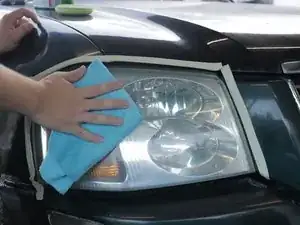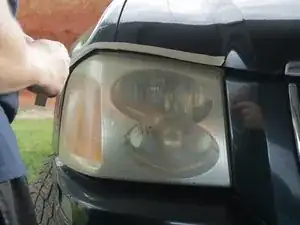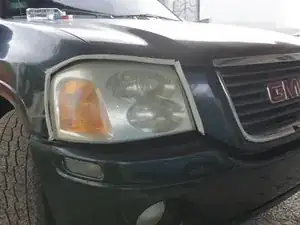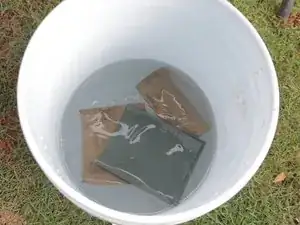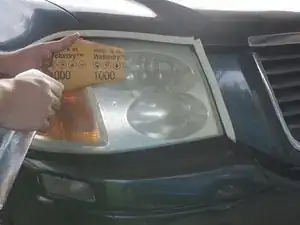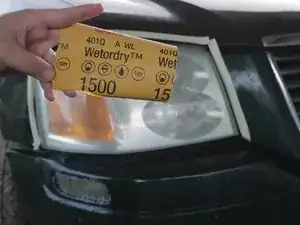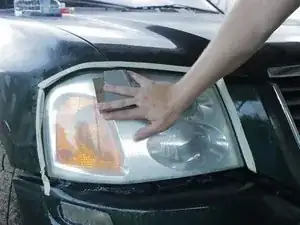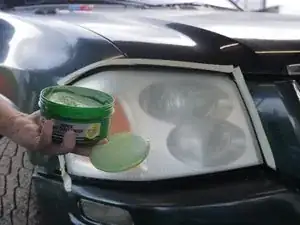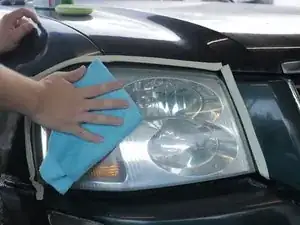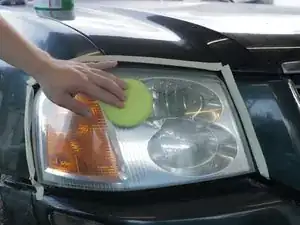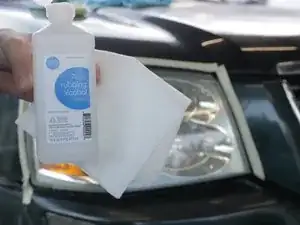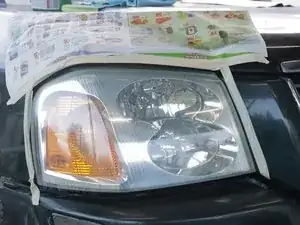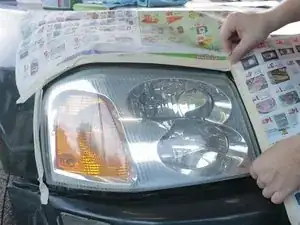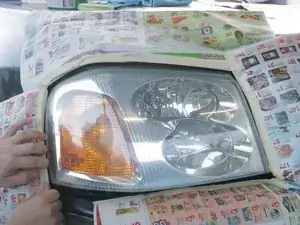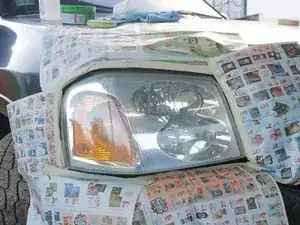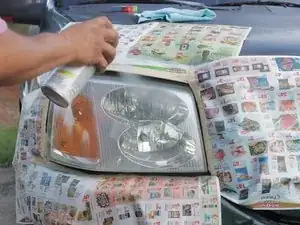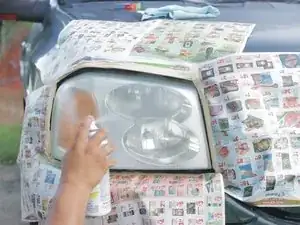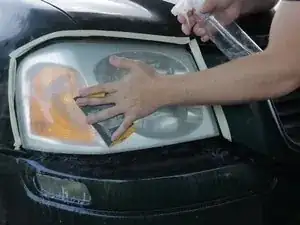Introduction
During normal use, headlights are exposed to UV light, dirt, chemicals, and water vapor, causing their plastic housing to oxidize and deteriorate, making the headlight foggy and potentially reducing visibility by up to 50%. While this guide demonstrates the headlight restoration on a 2003 GMC Envoy, these steps will bring any foggy headlights back to like-new conditions.
Before beginning, make sure that rain or other precipitation isn't expected in your area for the next couple days, or that you have a well-ventilated garage or covered space to work in; excessive moisture will disrupt the clear coat as it cures.
Tools
-
-
Use wet 1000 grit sandpaper and light pressure to sand the plastic in circular patterns. When you notice that the small scratches look identical across the entire headlight, sand horizontally until all the small scratches appear horizontal.
-
Repeat the process with 1500, then 2000 grit sandpaper.
-
-
-
Thoroughly dry the headlights.
-
Use a microfiber cloth and moderate pressure to apply a thin layer of carnauba wax to the entire surface of the headlights.
-
Wait until the wax dries to a haze, then buff it off with a clean microfiber towel.
-
-
-
Tape down newspaper or plastic bags at least a foot in radius surrounding the headlights, to avoid damaging your vehicle's paint during the clear coat application.
-
-
-
Shake the clear coat well and apply a thin coat evenly across the entire headlight, using long, quick strokes to avoid pooling.
-
Wait for the clear coat to fully dry before applying the next coat. Apply at least two coats for better results.
-
-
-
Repeat Steps 3 and 4 to achieve the best result, using only 2,000 grit sandpaper and very light pressure to smooth the clear coat.
-
Enjoy your crystal-clear headlights!
